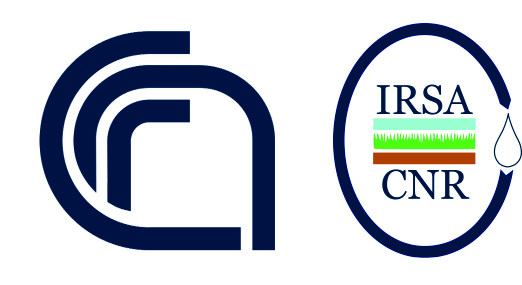Scheda di dettaglio – i prodotti della ricerca
| Dato | Valore |
|---|---|
| Title | DETRITUS ACCUMULATION AND DECOMPOSITION IN A COASTAL LAKE (ACQUATINA-SOUTHERN ITALY) |
| Abstract | Knowledge about processes and dynamics underlying organic matter accumulation in transitional waters is crucial for the protection of these ecologically important coastal habitats. This study investigated the relationship between large particle accumulation and decomposition in a coastal lake included in a Site of Community Interest (SCI) using sediment trap and litterbag techniques. 2. Two sets of sediment traps were deployed at five sites along the longitudinal axis of the lake. One set was emptied once a month for 12 months, and the other twice a year. The contents of the monthly and the 6-monthly traps and the superficial sediments were then compared to estimate the organic matter accumulation and loss. To determine the mass loss rate of the three major allochthonous sources of detritus (the reed Phragmites australis, the cordgrass Spartina juncea, and the seagrass Posidonia oceanica), litterbags were placed near the sediment traps at three out of the five sites at the beginning of each 6-month period and retrieved monthly. 3. The amount of annual particulate organic matter (POM) deposition in the traps was 1320.2±758.5 gm-2 y-1 and consisted of 25% large particles (CPOM). Allochthonous litter comprised an important fraction of CPOM, and its breakdown rate changed with the plant species, site and season. Loss rate of CPOM accumulated at the lake bottom was significantly related with the mass loss rate of reed and cordgrass litter, but not with that of seagrass. 4. Due to slow litter breakdown and tidal landward advection, the lake acted as a sediment trap for allochthonous matter, especially from Posidonia. The important role of marine-derived litter in organic matter sedimentation suggests addressing conservation strategies of the lake functioning towards the selective control of allochthonous CPOM inputs, in particular at the mouth where the incoming tide brings suspended material and salinity decelerates matter flow to the sea and decomposition. This study supports the hypothesis that sedimentation and decomposition dynamics are important factors for coastal lake evolution, and shows litterbag and sediment trap techniques as simple useful investigation tools in management strategies aiming at conserving transitional waters.© 2008 John Wiley & Sons, Ltd. |
| Source | Aquatic conservation (Print) 19 (5), pp. 566–574 |
| Keywords | decomposition; organic deposition; transitional waters; sediment trap; litterbags; Phragmites australis; Spartina |
| Journal | Aquatic conservation (Print) |
| Editor | John Wiley & Sons, Ltd., New York, N.Y., Regno Unito |
| Year | 2009 |
| Type | Articolo in rivista |
| DOI | 10.1002/aqc.1004 |
| Authors | COSTANTINI M.L. (a); ROSSI L. (a); FAZI S. (b); ROSSI D. (c) |
| Text | 42306 2009 10.1002/aqc.1004 ISI Web of Science WOS 000268072800008 decomposition; organic deposition; transitional waters; sediment trap; litterbags; Phragmites australis; Spartina DETRITUS ACCUMULATION AND DECOMPOSITION IN A COASTAL LAKE ACQUATINA SOUTHERN ITALY COSTANTINI M.L. a ; ROSSI L. a ; FAZI S. b ; ROSSI D. c a Department C.Darwin Ecology Area , University of Rome La Sapienza, Via dei Sardi 70, 00185 Rome, Italy b C.N.R. Water Research Institute Via Reno, 1 00198 Roma, Italy c Department of Earth Science, University of Rome La Sapienza Piazzale A.Moro 5, 00185 Rome, Italy Knowledge about processes and dynamics underlying organic matter accumulation in transitional waters is crucial for the protection of these ecologically important coastal habitats. This study investigated the relationship between large particle accumulation and decomposition in a coastal lake included in a Site of Community Interest SCI using sediment trap and litterbag techniques. 2. Two sets of sediment traps were deployed at five sites along the longitudinal axis of the lake. One set was emptied once a month for 12 months, and the other twice a year. The contents of the monthly and the 6 monthly traps and the superficial sediments were then compared to estimate the organic matter accumulation and loss. To determine the mass loss rate of the three major allochthonous sources of detritus the reed Phragmites australis, the cordgrass Spartina juncea, and the seagrass Posidonia oceanica , litterbags were placed near the sediment traps at three out of the five sites at the beginning of each 6 month period and retrieved monthly. 3. The amount of annual particulate organic matter POM deposition in the traps was 1320.2±758.5 gm 2 y 1 and consisted of 25% large particles CPOM . Allochthonous litter comprised an important fraction of CPOM, and its breakdown rate changed with the plant species, site and season. Loss rate of CPOM accumulated at the lake bottom was significantly related with the mass loss rate of reed and cordgrass litter, but not with that of seagrass. 4. Due to slow litter breakdown and tidal landward advection, the lake acted as a sediment trap for allochthonous matter, especially from Posidonia. The important role of marine derived litter in organic matter sedimentation suggests addressing conservation strategies of the lake functioning towards the selective control of allochthonous CPOM inputs, in particular at the mouth where the incoming tide brings suspended material and salinity decelerates matter flow to the sea and decomposition. This study supports the hypothesis that sedimentation and decomposition dynamics are important factors for coastal lake evolution, and shows litterbag and sediment trap techniques as simple useful investigation tools in management strategies aiming at conserving transitional waters.© 2008 John Wiley Sons, Ltd. 19 Detritus accumulation Acquatic_conservation.pdf Articolo in rivista John Wiley Sons, Ltd. 1052 7613 Aquatic conservation Print Aquatic conservation Print Aquat. conserv. Print Aquatic conservation Print Marine and freshwater ecosystems Print stefano.fazi FAZI STEFANO TA.P04.016.001 Caratteristiche ecologiche di comunita acquatiche in ambienti fluviali e lagunari |
